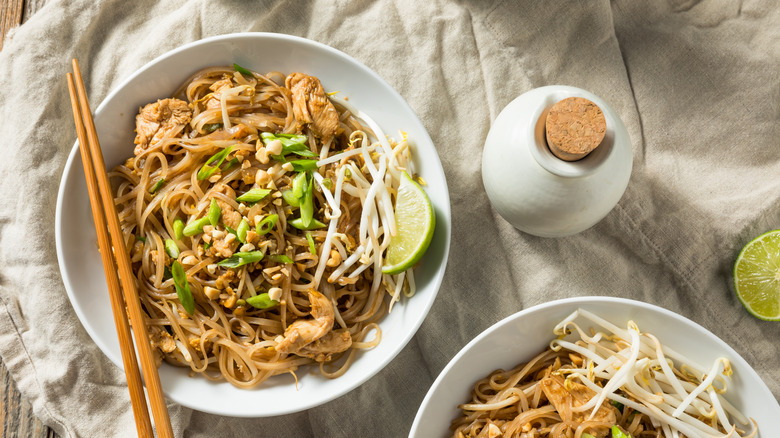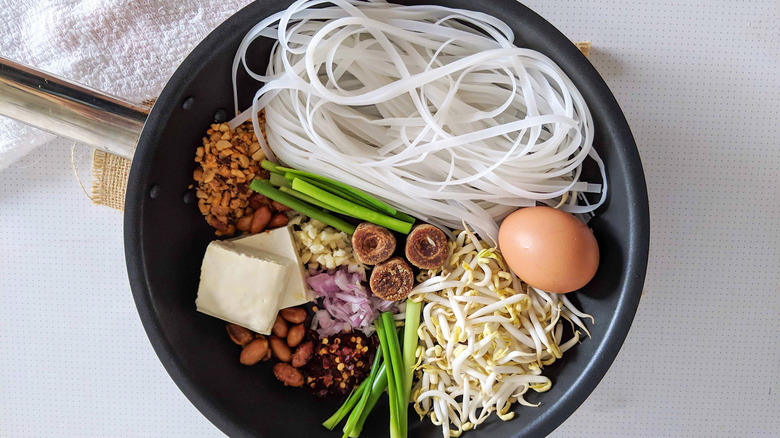The Ingredient Traditional Pad Thai Never Uses
If there is one dish that represents Thailand, it is pad Thai, which is served at just about every restaurant in the world devoted to that South East Asian cuisine, as well as a few other restaurants serving pan-Asian or Asian fusion cuisine. The noodle dish is so popular that Gastronomica says it is served everywhere "from Moscow to Toronto to Witchita."
The dish has its roots in the 1930s, back to the time when a military coup sought to turn the country's absolute monarchy into a constitutional one. One of the architects of that coup was the late Prime Minister Plaek Pibulsonggram, who was also known as Phibun and sought to encourage the creation of a Thai identity after he came to power.
"Part of Phibun's nation-building strategy was to develop 'Thai-ness' and impose a 'Thai Great Tradition' to demonstrate the strength and unity of the Thai nation," author Penny Van Esterick wrote in "Materializing Thailand," per The Atlantic. One of those initiatives included the creation of a national dish that would be easy to make, but would also, in the long run, raise nutritional standards and improve the national diet, which, at the time, was suffering because of a rice shortage, per Thai Ginger.
In the years since, traditional pad Thai has not only become extremely popular, but also extremely versatile — aside from one particular ingredient.
The basic pad Thai recipe allows for some creativity -- but not with ketchup
While Phibun's idea was to create one unifying dish that would develop "Thai-ness," chefs from around the country would eventually find different ways to prepare the dish, each suited to the tastes of their own regions, per Thai Food and Travel. A more traditional recipe like the one found in Hungry for More might call for a sauce made with tamarind paste, palm sugar, shallots, and fish sauce; But Thai Food and Travel says adjustments can be made so that instead of tamarind and palm sugar, vinegar and granulated sugar, which are easier to find, can be used instead. The site also says other substitutions can be made, such as using soy sauce instead of fish sauce and ground dried chilies instead of fresh ones.
But one ingredient add-in that can only happen in Thai American kitchens is ketchup, which gives pad Thai a reddish or orange-y hue not found in authentic iterations of the dish. Thai Food and Travel and Hot Thai Kitchen say there are times American versions of pad Thai will also use paprika to make it red in an effort to make the dish more appealing to customers, but neither ketchup nor paprika are ingredients commonly found in Thai kitchens.

